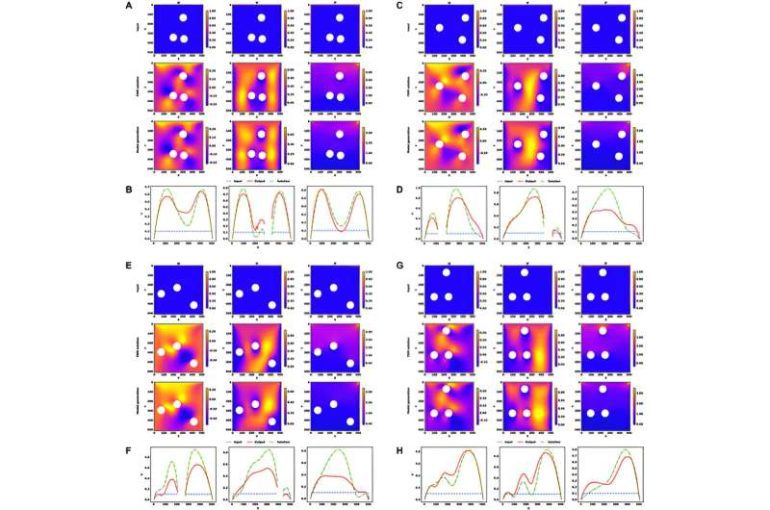- Traditional fluid dynamics simulations are slow and resource-heavy due to Navier-Stokes equations.
- A new AI-powered method solves fluid dynamics problems 1,000 times faster than conventional methods.
- The AI model can run on consumer-grade hardware, completing tasks in milliseconds compared to seconds for traditional methods.
- The approach combines supervised learning with physics-based methods, reducing reliance on large datasets.
- The model is built on a customized U-Net architecture that balances speed and accuracy in fluid simulations.
- It can adapt to various boundary conditions and complex geometries, providing flexibility for different applications.
- This method is particularly valuable for industries requiring real-time predictions, such as gaming, ocean modeling, and weather forecasting.
- The solution is low-cost and adaptable, making high-quality fluid simulations more accessible.
Main AI News:
The challenge of simulating fluid dynamics, vital in industries ranging from gaming to meteorology, has long been dominated by the Navier-Stokes equations. While critical for understanding fluid behavior, these complex equations are notoriously time-consuming and resource-intensive to solve. However, a cutting-edge deep learning solution is now changing the game, offering a method up to 1,000 times faster than traditional approaches. This groundbreaking advancement, recently published in Intelligent Computing, has far-reaching implications across various industries.
In a key experiment, the team behind this innovation applied their method to the lid-driven cavity flow problem—a common test case in fluid dynamics—using a large 512 × 512 grid. Running the test on a standard Intel Core i5 8400 desktop processor, their AI-based solution outperformed traditional finite difference methods by a wide margin. The AI model completed simulations in just 7 milliseconds, compared to the 10 seconds required by traditional solvers. This leap in performance brings the possibility of real-time fluid simulations to everyday devices at a fraction of the usual cost.
The team’s approach of combining supervised learning with physics-based methodologies is central to the breakthrough. Many AI models for fluid dynamics are limited by the need for large, labeled datasets, which can need more diversity and physical detail for complex problems. To address this, the researchers employed a staged training process. They progressively trained their models to handle increasingly complex scenarios, starting with minimal pre-computed data. This method reduced the reliance on large datasets and ensured that the AI could capture the essential dynamics of fluid flow with high precision.
At the heart of the model lies a customized convolutional U-Net architecture explicitly designed for fluid dynamics applications. This U-Net functions as a modified autoencoder, with an encoder that simplifies the input data and a decoder that reconstructs it into high-resolution outputs. The model retains essential features throughout the process by utilizing skip connections between these two components, resulting in more accurate and reliable simulations.
To further ensure the model’s outputs align with real-world physics, the team developed a custom loss function that integrates data-driven insights and physics-based constraints. This fusion of approaches allows the AI to simulate fluid behavior quickly and maintain the accuracy needed for real-world applications.
The system retains the traditional 2D matrix structure for representing computational domains, which defines the parameters and constraints of fluid dynamics problems. These constraints include the domain’s geometric and physical properties and the boundary conditions governing the fluid flow. This framework enables the model to adapt to various boundary conditions and geometries, even those it has yet to encounter during training, ensuring versatility across different use cases.
This innovation is set to revolutionize industries that depend on fluid dynamics simulations. The method’s ability to deliver fast, accurate results on consumer-grade hardware makes it especially valuable for applications like real-time video game engines, precise ocean current modeling, and improved weather forecasting. Its low-cost and adaptable nature means that industries can now access high-quality simulations without investing in expensive computing infrastructure or waiting hours for results. The combination of speed, accuracy, and accessibility positions this AI-powered approach as a pivotal tool for industries seeking to streamline their fluid dynamics analysis.
By making complex simulations more accessible and efficient, this deep learning-based solution is poised to unlock new possibilities for innovation across sectors, ultimately shaping the future of fluid dynamics modeling and its real-world applications.
Conclusion:
This AI-driven advancement in fluid flow simulations presents a significant market shift. Industries such as gaming, weather forecasting, and engineering now have access to faster, more affordable simulation tools, reducing the need for expensive computational infrastructure. The ability to perform real-time predictions on everyday devices will democratize access to advanced fluid simulations, opening new opportunities for smaller players to compete in fields that previously required significant investments. As this technology becomes more widespread, it could accelerate innovation, offering businesses faster go-to-market strategies and improved operational efficiency, ultimately reshaping the competitive landscape.

